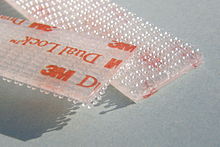Construction bionics
In construction bionics , mechanisms and construction methods from the field of biology are analyzed and compared. It is researched and explored how the individual elements work and interact in the overall construction. A distinction is made between static, kinematic and dynamic natural constructions. The peculiarities of the natural constructions are then tried to transfer to the technical constructions. The aim is to optimize the technical constructions in this way.
Examples of construction bionics
One example of construction bionics is the bionics car. During the development of the Bionic Car, the boxfish, among other things, was examined more closely. Despite its chunky appearance, the boxfish is a very agile swimmer, lives at great depths and can therefore withstand strong pressure. In addition, it hardly loses speed when swimming, which means that its shape has little water resistance. The drag coefficient of the boxfish is only 0.06, which is very low from the point of view of a car body designer. The developers at Mercedes-Benz wanted to transfer these advantages of the boxfish to a car in order to achieve the lowest possible aerodynamic drag. A major advantage that results from this is the reduction in fuel consumption and the protection of the environment .
In addition to the bionics car, the Velcro fastener is another example of construction bionics. Over 60 years ago, the Swiss George de Mestral discovered the Velcro principle. After he was in the forest, he noticed that a lot of burdock had got stuck on his clothes and his dog's fur. He then examined the structure and structure of the burdock and noticed that the burdock had many small barbs. Because these barbs get caught in contact with clothing, for example, the burrs stick to the clothing . A little later, the Swiss transferred this principle of the Velcro to technology and invented Velcro in 1948. This locking means is widespread nowadays and can be found on many children's shoes and jackets. In the future, construction bionics will still play an important role in the development of new technical constructions, because there are still many undiscovered constructions from nature that can and will still be used.
literature
- Werner Nachtigall: Learning from nature. Beck, Munich 2008, ISBN 978-3-406-53636-6 .
- Zdenek Cerman, Wilhelm Barthlott, Jürgen Nieder: Inventions of nature. Rowohlt, Reinbek near Hamburg 2005, ISBN 3-499-62024-3 .
Web links
- Construction bionics course at Saarland University
- The Velcro fastener on Wissen.de


